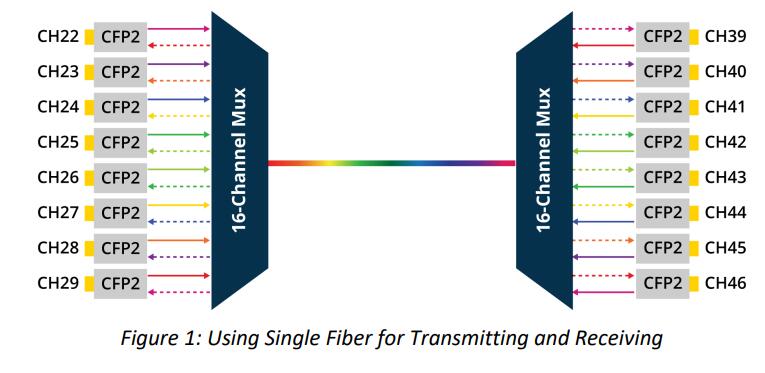In an era characterized by explosive data growth and the relentless expansion of cloud computing services, the demand for high - speed and long - distance data transmission between data centers has reached unprecedented levels.
For 100M distance, can use the following solution. But for Longer distance, HTF also has the solution.

400G optical transmission technology represents a significant leap forward in data communication. It offers extremely high bandwidth, enabling the transfer of vast amounts of data in a short time. For data centers, which serve as the core hubs of data storage and processing, 400G can meet the increasing requirements for data exchange between different centers, such as real - time data synchronization, large - scale data migration, and cloud service interoperability. The higher data rate not only improves the efficiency of data center operations but also provides a solid foundation for emerging technologies like artificial intelligence and big data analytics, which rely on rapid data transfer.
However, when considering a 120 - kilometer distance between data centers, several challenges need to be addressed. One of the primary obstacles is optical signal attenuation. As light travels through optical fibers, its power gradually decreases due to factors such as absorption and scattering within the fiber material. Over a 120 - kilometer span, the attenuation can be substantial, potentially degrading the signal quality to a point where data errors occur frequently.
Another critical issue is chromatic dispersion. Different wavelengths of light in an optical signal travel at slightly different speeds in the fiber, causing the signal to spread out over time. In long - distance transmission, chromatic dispersion can lead to inter - symbol interference, which severely impacts the integrity of the transmitted data.
Despite these challenges, there are several technological solutions that can make 400G deployment over 120 kilometers a reality. Advanced optical amplifiers, such as erbium - doped fiber amplifiers (EDFAs) and Raman amplifiers, can be strategically placed along the fiber route to compensate for signal attenuation. EDFAs boost the optical signal power by amplifying the light within the fiber using the gain medium of erbium - doped fiber, while Raman amplifiers utilize the Raman scattering effect in the fiber to amplify the signal over a wide bandwidth.
To deal with chromatic dispersion, dispersion , HTF use coherent optical module to solve the this chromatic dispersion issue. Use coherent optical module, so don't need consider the DCM. Less optical parts.
In addition, modulation formats and coding techniques also play crucial roles. Advanced modulation formats like quadrature amplitude modulation (QAM) can increase the spectral efficiency of the 400G signal, allowing it to carry more data per unit bandwidth while maintaining a certain level of tolerance to signal degradation. Forward - error - correction (FEC) coding can detect and correct errors that occur during transmission, improving the reliability of the data link. By combining these technologies, it is possible to achieve stable 400G transmission over 120 kilometers.


HTF can hel pyou deploy 400G between data centers separated by 120 kilometers, Max support 40x400G, If need upgrade your data center network, welcome to contact HTF. ivy@htfuture.com








